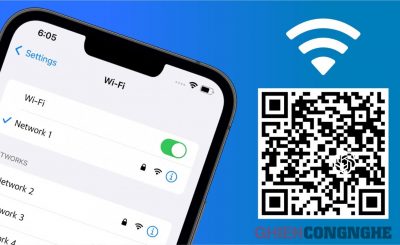The upgraded iPhone 13 product line is quite impressive in terms of camera. All four iPhone models are equipped with sensors with larger pixels, anti-shake capability by shifting the sensor for the main camera.
All of those upgrades are great, but the Cinematic mode is perhaps one of the most notable.
What is Cinematic?
Cinematic is a video recording mode available on all four iPhone 13 models. It gives you more professional, cinematic video recording by being able to precisely focus on your subject in each frame. Figure. You can check out Apple’s Cinematic introduction video to better understand this mode:
Basically, Cinematic automatically shifts the subject in focus in the video. Relying on various technologies including face recognition, Cinematic accurately predicts the main subject of the frame. This helps the subjects that are the focus of the frame always be in focus at the right time, in the most reasonable way.
How does Cinematic work?
iPhone 13 and iPhone 13 mini must use parallax to determine different depths and distances in a scene. Based on these data, the camera system separates nearby objects from distant objects. The system also analyzes the movements between frames.
Meanwhile, the iPhone 13 Pro and iPhone 13 Pro Max can use LiDAR, a more modern tool. LiDAR emits light waves invisible to the naked eye. By analyzing the time it takes for light to travel to an object and reflect back to the sensor, LiDAR is able to draw a 3D map of the space in front of the camera.
Using LiDAR for Cinematic on iPhone 13 Pro and Pro Max produces excellent video quality. However, it may cause the iPhone 13’s Cinematic video quality to differ from that of the iPhone 13 Pro. So far, Apple has not mentioned that LiDAR will be involved in Cinematic video recording.
Cinematic’s Focus Point Prediction Technology
Besides facial recognition, Cinematic mode also works on technology that predicts the next focus point. In the demo video below, you can see Cinematic shifting focus from one person’s face to another.
If one person faces away from the camera direction, the focus point will be shifted to the other person or to another subject in the direction of the other person’s face. In another scene, when a person enters the frame the camera will quickly shift focus to their face. It seems that the transition begins before the character’s face is fully visible.
This suggests that Cinematic’s focusing behavior can be affected by the ultra-wide camera even though it’s not actually intended for video recording. The ultra-wide camera will play the role of providing data to the main camera so that it prepares to adjust focus before the subject appears in the frame.
Phase detection autofocus also contributes a lot to the Cinematic mode. All iPhone 13 models have dual phase detection autofocus.
Depth of field
However, it’s the depth of field that will make your Cinematic videos look really different. It’s like the iPhone’s Portrait mode is included in the video.
Apple’s competitors have also introduced the ability to blur the video background into their smartphones. However, the results are often patchy and unnatural, no company has really created a product useful enough for users.
Apple’s new Cinematic mode provides just that. It even allows you to adjust the amount of background blur by changing the aperture value. Apple also says you can change the focus point after recording a video.
Cinema mode will also provide manual controls for you to focus on yourself. This option allows you to adjust the focus of the video instead of leaving it to automatic software entirely.
The limitations of Cinematic mode
Cinematic mode’s resolution and frame rate are limited to 1080p, 30fps. Meanwhile, if recording in normal HDR Video mode with Dolby Vision, users can adjust the resolution up to 4K at 60fps.
The second limitation is that it is likely that Cinematic will only be equipped on the iPhone 13. There are two reasons for Apple to decide this. Firstly, only the iPhone 13 series with upgraded camera and processor can guarantee Cinematic video quality. Second, this decision will help Apple secure iPhone 13 sales.
Source link: What is Cinematic mode, what’s special about Cinematic mode on iPhone 13?
– https://techtipsnreview.com/





